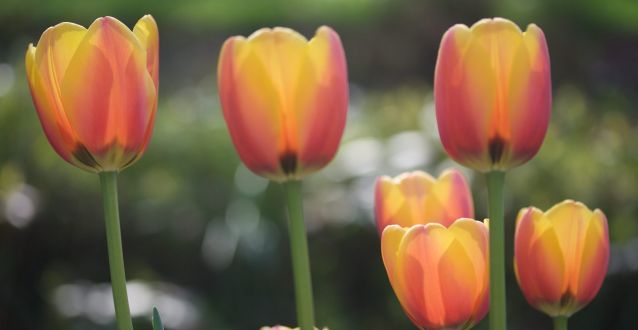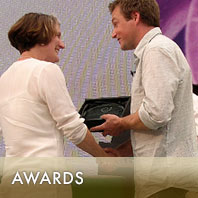Success with Bulbs

I love bulbs, particularly winter and spring flowering bulbs. Much of the garden only really gets into full swing from late Spring / early Summer, so bulbs can really inject a welcome splash of colour earlier on. They are also great in newly planted gardens for filling in the initial gaps before the main planting grows. Of course it doesn’t have to be just early in the year – through careful planning you can have bulbs flowering from January right through to Autumn, but nothing gets us looking forward to the gardening year ahead quite like the first Snowdrops and Winter Aconites pushing up through the ground whatever the weather.
The best time for planting most bulbs is from late September once the ground starts to cool down. Generally the smaller bulbs need to be planted earlier in Autumn before they can dry out, but Tulips and Daffodils still perform well even if planted as late as mid January. The general rule of thumb for how deep to plant a bulb is 2 to 3 times the height of the bulb. For most bulbs it is obvious which way up to plant them (broader basal plate at the bottom and pointy end up), but if in doubt plant it on its side and the bulb will be able to sort itself out.
The majority of bulbs like good drainage, so if planting in containers use a good free draining compost and plenty of crocks in the bottom, or if planting in the ground consider improving the soil structure if necessary by adding grit. Some bulbs do welcome moister meadow type conditions, and these include Snake’s Head Fritillaries and Camassias.
The ongoing care of many bulbs is straightforward. Allow leaves and stems to die back fully before cutting back so that they can feed the bulbs for next year. Cut off seed pods (pods only, leave the stems to die down) from bulbs such as Daffodils and Tulips so the plant puts its energy into the bulb rather than producing seeds. A few specific care tips:
* Tulips left in the ground tend to produce less flowers in future years than if they are lifted each year, so it often becomes necessary to replace them. Applying a high potash fertiliser in late Winter or early Spring before shoots emerge can help.
* Snowdrops will gradually form dense clumps. These can be divided, which is best done when they are “in the green”, ie there is still lush foliage.
Finally it is worth bearing in mind the wildlife. I don’t just mean which flowers will be a magnet for bees (Alliums and Nectaroscordum are fantastic in this regard), I mean which could get dug up and eaten! Different people experience different wildlife issues, but my own experience is:
* Squirrels love newly planted Crocus bulbs (I’m sure they’re watching me while I plant them)
* Badgers can wreak havoc digging up Tulip bulbs (I’ve even had them break pots to get at them!)
* Muntjac deer are famous for grazing on Bluebells, but they will eat the leaves and flowers of many different bulbs including Camassias and Tulips
* Snowdrops, Daffodils and Alliums seem to be immune from becoming a tasty snack at least in my garden. Some types of Allium bulbs are even said to ward off Moles.
This doesn’t necessarily mean don’t grow bulbs such as Tulips, but if you have hungry wildlife visitors you may want to bear it in mind or consider protecting the bulbs you’ve put so much effort into planting – one method to deter the diggers is a piece of clematis net pegged down over the bulbs. My own approach tends to be to plant in large numbers and hope that most will survive. Sometimes it pays off, sometimes not, but I still think that bulbs are well worth the risk.
Categorised in: Advice
This post was written by Christine Whatley on November 24, 2014 11:51 am







